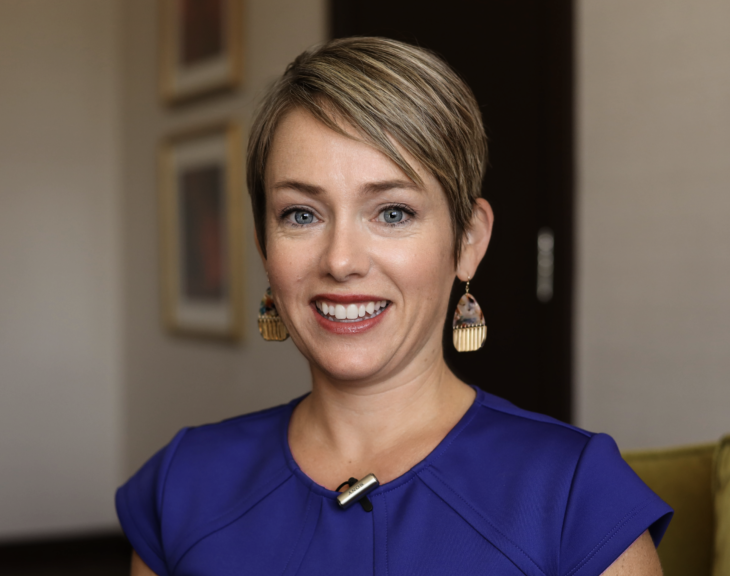
As we finish the 2020-2021 school year, schools across the United States experimented, out of necessity, with hybrid and virtual learning. With vaccines, we see the light at the end of the tunnel and classes can return to in-person for the 2021-2022 school year. While this last year was full of challenges, there are key areas to learn from and consider to help ensure a successful transition back to full-time classroom learning.
Technology is here to stay. The COVID-19 pandemic forced teachers and students to utilize technology in a new way. From virtual instruction to activities and worksheets, technology allowed schools to quickly pivot and meet the demands of delivering an education in a different format. While the increased reliance on technology was necessary, it placed heightened demand on students to become savvy in navigating the world of downloads, attachments and submitting assignments virtually. Shifting back into the classroom will allow teachers to maintain some of the efficiencies technology provides, while providing improved support to navigate the challenges of technology. However, balancing technology with face-to-face instruction, written notes and movement will be key in helping foster personal connections and brains that are primed to learn. Studies show that engaging a child’s muscles and senses are key strategies to engage the brain to enhance focus and memory. Strategies as simple as movement breaks and writing versus typing have been shown to be more effective in helping students focus and remember information!
Stamina. The hardest thing for many children returning to school full time will be the stamina required for a full day of sitting, paying attention and sensory overload. Virtual learning provides kids the comfort of learning from home, allowing for freedom of movement and breaks in a way that a classroom does not. The return to school means a return to schedule, structure, and eating only at designated times. In order to get kids back into the swing of school, try setting aside structured time, in a dedicated space each day for reading and practice worksheets. This will keep their minds engaged, and will prepare their bodies to sit still for longer periods of time.
Flexible seating. Did you know that for many kids holding still can be exhausting? The growing brain craves the stimulation of movement. As a child develops the brain improves its ability to inhibit and control movements. This means the younger a child is developmentally, the harder it is for them to have control. Young kids, and those with any developmental immaturities, such as ADHD, use energy to remind themselves to hold still. Allowing for movement opportunities in the classroom can help kids devote energy to paying attention and learning, rather than trying to control their arms and legs. Examples of flexible seating for the classroom can include an exercise ball, rocking chair, or a seat with pedals (similar to a bike). After a year of less restrictive seating at home, being more open to movement and different seating scenarios may help to ease the transition back into long days of sitting. Teachers, movement and flexible seating applies to you as well! Many companies encourage stand up desks and on-site exercise facilities, because using your muscles wakes up the adult brain too.
Socialization. So much of our social learning takes place in the lunchroom and on the playground. Pushing boundaries, watching for reactions and interacting with both kids and adults is how we learn what behaviors are acceptable and appropriate. This year took away nearly twelve months of social learning and exploration. Next school year our kids will be a year older in height, but may need to re-learn and re-experience many of life’s social nuances. To help kids navigate social interactions, think like a coach. Look for opportunities to point out what they did well, and share ways that they could do better next time. Role playing and demonstrating exaggerated behaviors can be a great way to help a child understand expectations in social interactions.
Resilience. If this year has shown us anything, it is the resiliency of kids. Change is hard, yet our kids shifted to a completely different learning experience, that for some changed many times throughout the year. But as resilient as they are, we also need to keep in mind kids have fewer coping strategies to navigate life’s challenges than adults, and a year of constant change creates stress and uncertainty. Giving kids the time and space to express fears and concerns and to set clear expectations for the coming days and weeks will help everyone prepare for the next school year.
Dr. Jackson is currently the VP of Programs and Outcomes for Brain Balance, where she designs and implements programs focused on strengthening the brain to optimize human performance for a variety of ages and abilities. Dr. Jackson graduated from Life University as a Doctor of Chiropractic in 2001. You can find her recently peer-reviewed research in the Journal of Advances in Medicine and Medical Research 2021, Effect of the Brain Balance® Program on Cognitive Performance in Children and Adolescents with Developmental and Attentional Issues. Jackson has appeared on national broadcast including ABC’s The Doctors Show and NBC Nightly News with Lester Holt and has contributed to numerous national print outlets including Forbes, Business Insider, TODAY and many more.
More from DA









